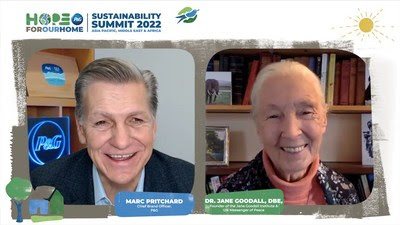Sommet Pour la Paix Dans la Péninsule Coréenne
Washington, DC, Jan. 25, 2022 (GLOBE NEWSWIRE) — POUR DIFFUSION IMMÉDIATE
Sommet mondial pour étudier les moyens
de ramener la paix dans la péninsule coréenne
La Fédération pour la paix universelle (FPU) et le gouvernement royal du Cambodge sont heureux d’annoncer la tenue du prochain Sommet mondial 2022 (Sommet pour la paix dans la péninsule coréenne) à Séoul, en Corée du Sud. Les conférenciers principaux et les participants de 157 pays s’adresseront à la fois à un public en personne et à un public virtuel mondial sur les perspectives de réconciliation pacifique de la péninsule coréenne.
Le Sommet mondial 2022 sera organisé par le Dr Hak Ja Han Moon, cofondatrice de la FPU, et co-organisé par Samdech Techo Hun Sen, Premier ministre du Royaume du Cambodge, et SE Ban Ki-moon, ancien secrétaire général du Les Nations unies.
Le Sommet, du 10 au 13 février 2022 est intitulé : « Vers la paix dans la péninsule coréenne ». Des orateurs éminents examineront de nombreux aspects de la réconciliation, à commencer par des propositions de dialogue constructif et la recherche d’un consensus entre les acteurs majeurs autour de la question coréenne.
D’autres sujets seront abordés : projets de coentreprise entre les deux Corées susceptibles d’impliquer aussi la Chine, le Japon, la Russie et les États-Unis ; projets touristiques en Corée du Nord ; convertir la DMZ – qui, intacte depuis 1953, est redevenue un environnement naturel vierge – en monument à la paix mondiale.
« La guerre de Corée a commencé il y a plus de 70 ans et s’est conclue par un armistice, et non par un traité de paix », a déclaré le président de la FPU, le Dr Thomas G. Walsh. Et d’ajouter : « La péninsule coréenne a une culture et langue et une histoire plurimillénaire commune. Ne peut-on pas résoudre ce conflit et chercher la réunification pacifique de la péninsule ? Le Sommet tentera de répondre à ces questions ».
Avec ce Sommet mondial 2022, la FPU poursuit une série d’activités de consolidation de la paix sous le thème « prospérité mutuelle, interdépendance valeurs universelles partagées ». La FPU, ONG dotée du statut consultatif général auprès du Conseil économique et social de l’ONU, est connue pour sa série de Rassemblement de l’Espoir, ses conférences internationales des dirigeants et, depuis début 2021, son Forum Think Tank 2022. Ce dernier projet mobilise plus de 2 000 leaders d’opinion mondiaux en vue d’une percée pour la paix dans la péninsule coréenne. (Des détails sur les Think Tank 2022 sont disponibles sur UPF.org.)
Conformément aux directives de sécurité de Covid-19, plus de 1000 personnes devraient se rassembler à Séoul pour le Sommet mondial 2022 lors des séances d’ouverture du vendredi 11 février 2022. Des millions d’autres participeront via un format hybride de haute technologie.
Dans le cadre du Sommet mondial 2022, les associations de consolidation de la paix affiliées à la FPU tiendront plusieurs sessions de haut niveau :
● Le Conseil international au sommet pour la paix (ICSP) et l’Association internationale des premières dames pour la paix (IAFP)
● Association internationale des parlementaires pour la paix (IAPP)
● Association interreligieuse pour la paix et le développement (IAPD)
● Association internationale pour la paix et le développement économique (IAED)
● Association internationale des médias pour la paix (IMAP)
● Association internationale des universitaires pour la paix (IAAP)
● Association internationale des arts et de la culture pour la paix (IAACP)
Pour les demandes des médias, veuillez contacter :
William P. Selig | Directeur des communications, Universal Peace Federation
Tél. : 240-274-1744 | Courriel : wselig@upf.org | Web : www.upf.org
Attachment
William P. Selig Universal Peace Federation 240-274-1744 wselig@upf.org

